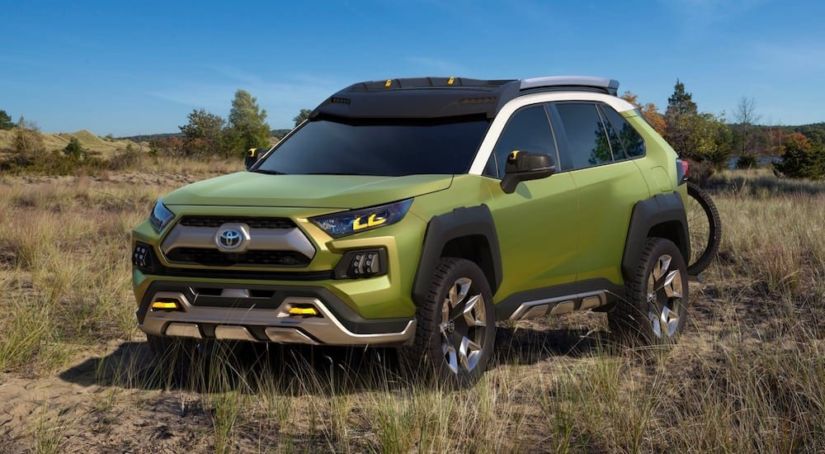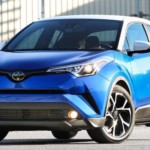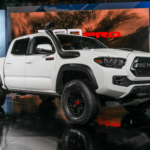Any psychiatrist or self-help guru would agree that honest introspection is a key component of effective personal growth. Suffice it to say that the same theory would apply to corporate growth and, based on current auto news, Toyota seems to be holding a mirror up to themselves in order to inform the upcoming chapters of their corporate evolution.
At first glance, Toyota’s most recent fiscal year numbers look overwhelmingly positive, with operating profits increased by 17% (just shy of $4 billion USD). This, combined with an all-time high revenue, thanks to a 6.1% increase paints a fairly warm image of Toyota’s current standing.
However, they are expecting a 4.2% decrease by March 31, 2019, based on a deteriorating foreign exchange rate and the fact that their FY17-18 numbers were aided by a one-time U.S. tax benefit. Factor in a decreasing interest in sedan offerings, and it becomes clear that Toyota has little choice but to look inwards in the hope of proceeding with any hope of prosperity.
Cost-Cutting
While Toyota is clearly employing a number of strategies to further sales and remain a viable player in automotive evolution, they are currently placing a huge emphasis on cost-control, stating…
“The reality is that the notion of high operational costs have emerged as an issue to tackle. What used to be the norm had somewhere along the way ceased to be so. Realizing this has led to a new start. In all workplaces, there is a call to action to fundamentally review fixed costs.”
Technology
Battling unfavorable exchange rates, Toyota has also been facing down the threats from the U.S. marketplace, specifically with plateauing interest in sedans. Even with the momentum gained by the celebrated redesign of the Camry, it does little to change the decreasing American interest in car models (favoring eco-crossovers and light trucks). As such, where does this leave an automaker whose primary bread & butter comes in the form of economically accessible coupe, sedan and hatchback offerings?
Of course, one direction taken by other automakers is to embrace the symbiosis between automotive and technology sectors. Recognizing this, Toyota identifies themselves at a crossroads, with only one real choice in terms of how to proceed: work with or compete against the ever-growing threat of tech companies.
“With our rivals and the rules of competition changing, a life-or-death battle has begun in a world of unknowns,” said Toyota President Akio Toyoda, grandson of the automaker’s founder. “Technology companies, who are our new rivals, with speed many times greater than our own and backed by abundant funding, are continuing to aggressively invest in new technologies.”
To-date, Toyota has taken a number of steps to ensure their continued viability. For example, last year they engaged in a joint venture with Mazda to develop technologies for electric vehicles, which has now been expanded to include both Subaru and Suzuki.
In addition, Toyota formed the Toyota Research Institute – Advanced Development facility upon a $2.8 billion foundation to develop the software required to operate autonomous self-driving vehicles. Their refocused committeemen is also visible in the 60-acre site in Michigan, which it will dedicate to the continued testing of autonomous vehicles, so as to eliminate any threat to public safety.
RAV-4
But aside from reinventing themselves as a tech-driven automaker, Toyota has also made it clear that they intend to play the cards that they’re already holding. One such card is the RAV-4 which ranked as America’s Best-Selling vehicle (aside from pickup trucks). With over 400,000 units sold, it goes without saying that Toyota is placing heavy emphasis on the next-generation design. That said, it’s of little surprise that the automaker is investing about $1.1 billion USD to upgrade three of its assembly plants, in order to focus on the highly-anticipated fifth-gem RAV-4.
Self-Critical Design Theory
Another area where Toyota’s new introspective nature has found focus is in terms of its design theory. In this case, consumers were ahead of the curve in its mass-understanding that Toyota designs were somewhat uninspired, even bland. This was the result of the automaker’s attempts to please everyone, achievable only through a ‘play it safe’ design philosophy. By walking the line, Toyota never took any real changes; and with minimal risk, comes minimal payoff.
However, the recent introduction of the Toyota New Global Architecture (TNGA) platform has changed the way that the automaker approaches design. Take for a moment, the enduring success of the Toyota Camry, even in the absence of a truly inspired design. That said, the recent redesign of the Camry into a more sporty and aggressive offerings presented a huge step in the right direction. After all, the immediate success of car styling rests more in the hands of those the redesign catered to than the family-centric buyers who would inevitably transition to the likes of a crossover.
And with the company’s corporate mandate “no more boring and safe designs” it becomes clear that the TNGA is tasked to continue in this direction. While the results might prove more divisive than previous model year offerings, it’s a worthwhile gambit if it results in new excitement about Toyota’s offerings.
“(TNGA) liberates vehicle design, enabling rooflines and bonnets to be lower and resulting in each model being visually distinctive with more appealing proportions,” states Toyoda. With designers more empowered in the process, it eliminates the design-by-consensus that the company had employed in the past. As with the Camry and the next-gen RAV4, it certainly creates some enticing thoughts about where cars like the Prius and even the Lexus LS might go.
Moving Forward
While I’ve never personally counted myself among Toyota’s enthusiastic customer base, it’s difficult not to give credit where credit is due. If my past criticisms were based on the uninspired nature of its offerings, then count me among those who are excited to see where this new approach takes them. With changes coming faster than ever, and competition being increasingly more vicious, it’s certainly not a time for any automaker to play it safe, or rest on their laurels.



